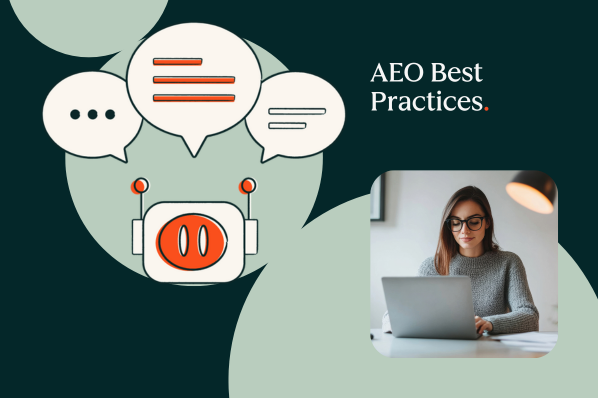What are AI algorithms?
AI algorithms are instructions that enable machines to analyze data, perform tasks, and make decisions. It’s a subset of machine learning that tells computers to learn and operate independently.
All the tasks that AI performs work on specific algorithms. From when you turn on your system to when you browse the internet, AI algorithms work with other machine learning algorithms to perform and complete each task.
AI and machine learning algorithms enable computers to predict patterns, evaluate trends, calculate accuracy, and optimize processes.
This video explains the workings of AI algorithms and the functions they can perform:
If you want more detail on AI, download this free eBook on Generative AI. You can also discover the distinction between the working of artificial intelligence and machine learning.
How do AI algorithms work?
AI algorithms work this way — they identify the patterns, recognize the behaviors, and empower the AI machines to make decisions.
Let’s say you tell your voice assistant like Alexa or Google Home to stream your favorite music.
The AI algorithm on which it is based will first recognize and remember your voice, get familiar with your choice of music, and then remember and play your most streamed music just by acknowledging it.
Similarly, AI content editor tools work on algorithms like natural language generation (NLG) and natural language processing (NLP) models that follow certain rules and patterns to achieve desired results.
This isn’t rocket science but a simple formula: “The more you learn, the more you grow.” As you serve the computer systems with rich data, the algorithms use it to gain knowledge and perform tasks more efficiently.
At the most basic level, an AI algorithm collects the data for training and then uses it to modify its knowledge. Next, it uses this knowledge to complete the tasks and improve accuracy.

Pro tip: Check out our new ChatSpot integrated AI tool for HubSpot users. Our latest content assistant uses generative AI to streamline content creation, generation, creativity, data management, SEO tasks, and more.
Types of AI Algorithms
Just as a mathematical calculation has various formulas with the same result, AI algorithms do.
Different business use cases have different algorithms and categories. For example, the algorithm used in various chatbots differs from those used in designing self-driving cars.
There are three major AI algorithm umbrellas under which hundreds of other algorithms fall: supervised, unsupervised, and reinforcement learning. The difference is how they are trained and the way they function.
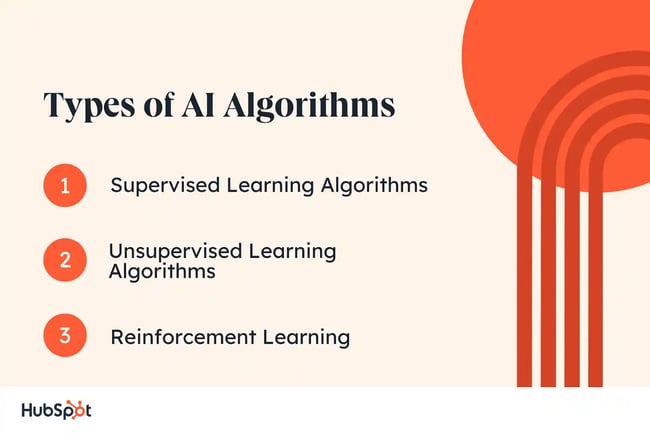
1. Supervised Learning Algorithms
The first most popular form of algorithm is the supervised learning algorithm. It involves training a model on labeled data to make predictions or classify new and unseen data.
The name “supervised” means working under the supervision of training sets. It works simply by using the desired output to cross-validate with the given inputs and train it to learn over time.
This learning algorithm is created under the supervision of a team of dedicated experts and data scientists to test and check for errors.
The developers train the data to achieve peak performance and then choose the model with the highest output.
Supervised learning algorithms most commonly solve classification and regression problems. Examples within this include Neural Networks, Decision Trees, Random Forest linear regression, time-series regression, and logistic regression.
Use cases: Marketers use this AI algorithm to predict sales with time, map customer sentiments, track stock prices, and more. Other use cases of supervised algorithms entail text recognition, object categorization, and spam detection.
What we like: Supervised learning creates and trains the algorithm in a scalable manner. For organizations, it saves the manual work of the employees and creates a personalized experience.
The good part about this algorithm is its simple process that provides high outcomes and draws accurate insights.
2. Unsupervised Learning Algorithms
Unsupervised learning uses unlabeled data to feed and train the algorithms. While supervised learning has predefined classes, the unsupervised ones train and grow by identifying the patterns and forming the clusters within the given data set.
Simply put, supervised learning is done under human supervision, whereas unsupervised learning is not. The unsupervised learning algorithm uses raw data to draw patterns and identify correlations — extracting the most relevant insights.
The most prominent examples of unsupervised learning include dimension reduction and clustering, which aim to create clusters of the defined objects.
Use cases: Clustering and data reduction have broader applications in biology, chemistry, and data mining.
In marketing and business, unsupervised learning is best used for customer segmentation — understanding customer groups and their behavior.
Unsupervised learning finds application in genetics and DNA, anomaly detection, imaging, and feature extraction in medicine.
Even Google uses unsupervised learning to categorize and display personalized news items to readers. First, it collects millions of news items on various topics.
Then, the search engine uses cluster analysis to set parameters and categorize them based on frequency, types, sentences, and word count.
Generative AI draws patterns and structures by using neural network patterns. However, it’s not limited to using only this approach.
It leverages different learning models (viz., unsupervised and semi-supervised learning) to train and convert unstructured data into foundation models.
What we like: Unsupervised learning algorithms discover the hidden patterns and structures within data, facilitating unsupervised feature learning and anomaly detection.
The best part is that it does not need any labeled data — which, in turn, proves to be more cost-friendly.
3. Reinforcement Learning
Reinforcement learning works the same way humans do. The algorithm trains and learns from the environment and receives feedback in the form of rewards or penalties to finally adjust its actions based on the feedback.

Reinforcement learning is a continuous cycle of feedback and the actions that take place. A digital agent is put in an environment to learn, receiving feedback as a reward or penalty.
Throughout the process, the agent tries to decide and get the desired outcome, which is the basis of feedback. If the feedback is received as a reward, the agent repeats and uses the same tactics in the next cycle, improving its behavior.
Examples of reinforcement learning include Q-learning, Deep Adversarial Networks, Monte-Carlo Tree Search (MCTS), and Asynchronous Actor-Critic Agents (A3C).
Use Cases: Reinforcement learning is a widely used algorithm that finds its applications across marketing, healthcare, gaming systems, traffic control, and image processing.
Even Netflix uses reinforcement learning training to recommend the series to its users and bring personalization. Amazon gains 35% of the consumers’ purchases from the recommendations made by reinforcement learning.
What we like: The principle of reinforcement learning lies in decision-making. Because of the rewards and penalty system, the algorithm makes fewer mistakes in the later stages.
It follows a pattern after that based on the reward or the numerical score it gets.
Tips for Training Your AI
The success of your AI algorithms depends mainly on the training process it undertakes and how often it is trained. There’s a reason why giant tech companies spend millions preparing their AI algorithms.
However, the cost of training AI is substantial. For instance, training a large AI model such as GPT-3 amounted to $4 million, as reported by CNBC.
Even the algorithm that Netflix’s recommendation engine is based on was estimated to cost around $1 million.
After all, it’s the most substantial part of the lifecycle of your AI system. The processes and best practices for training your AI algorithm may vary slightly for different algorithms.

Here are the best tips to train and implement your AI algorithms.
Determine the use cases.
The basis for creating and training your AI model is the problem you want to solve. Considering the situation, you can seamlessly determine what type of data this AI model needs.
Food giant McDonald’s wanted a solution for creating digital menus with variable pricing in real-time. As the customer places the order, the price of each product will depend on the weather conditions, demand, and distance.
Another use case in which they’ve incorporated using AI is order-based recommendations. Let’s say someone places an order for a salad. The AI model detects and suggests including a healthy drink with the meal.
It’s imperative to see how your peers or competitors have leveraged AI algorithms in problem-solving to get a better understanding of how you can, too.
Collect and prepare your data.
AI systems need data to thrive and grow as much as humans need air.
The prerequisite for AI algorithm training is gathering and preparing your data. By data, we mean the raw data that will be used as a base for training your AI algorithm.
Most organizations adopting AI algorithms rely on this raw data to fuel their digital systems. Companies adopt data collection methods such as web scraping and crowdsourcing, then use APIs to extract and use this data.
But mere data collection isn’t enough. The next crucial step is the data preprocessing and preparation, which involves cleaning and formatting the raw data.
Instagram uses the process of data mining by preprocessing the given data based on the user’s behavior and sending recommendations based on the formatted data.
Select your AI model.
Developers have to choose their model based on the type of data available — the model that can efficiently solve their problems firsthand. According to Oberlo, around 83% of companies emphasize understanding AI algorithms.
The model selection depends on whether you have labeled, unlabeled, or data you can serve to get feedback from the environment.
However, other factors decide the AI model architecture. The choice of AI model also depends on:
- The size and structure of the data.
- Complexity of the available dataset.
- Desired level of accuracy.
Based on these factors and the type of problem to be solved, there are various AI models such as Linear Regression, Decision Trees AI, Naive Bayes, Random Forest, Neural Networks, and more.
So, if the problem is related to solving image processing and object identification, the best AI model choice would be Convolutional Neural Networks (CNNs).
Train your AI model.
The basis of your AI algorithm relies on the training, testing, and validation of the dataset. Hence, it is the most crucial step in training your AI algorithm.
The first step is the initial training process. The prepared data is fed into the model to check for abnormalities and detect potential errors.
The predominant error in the AI model is overfitting. This means the error occurs when a particular trained dataset becomes too biased.
One example of overfitting is seen in self-driven cars with a particular dataset. The vehicles perform better in clear weather and roads as they were trained more on that dataset.
Consequently, vehicles fail to perform in extreme weather conditions and crowded places. When fed with a new data set, the AI model will fail to recognize the data set.
The subsequent steps in the training process are validation and testing.
While the validation re-examines and assesses the data before it is pushed to the final stage, the testing stage implements the datasets and their functionalities in real-world applications.
The testing stage is when the training wheels come off, and the model is analyzed on how it performs in the real world using the unstructured data.
If it fails to perform and return the desired results, the AI algorithm is sent back to the training stage, and the process is repeated until it produces satisfactory results.
Measure and track the results.
The final test is the basis of tracking your AI model. AI algorithms are measured using specific metrics to garner the results.
Calculate relevant evaluation metrics, such as accuracy, precision, recall, F1 score, or mean squared error, depending on your problem type.
Set a goal or a threshold value for each metric to determine the results. If the results aren’t satisfactory, iterate and refine your algorithm based on the insights gained from monitoring and analysis.
Always test your algorithm in different environments and train them to perfection.
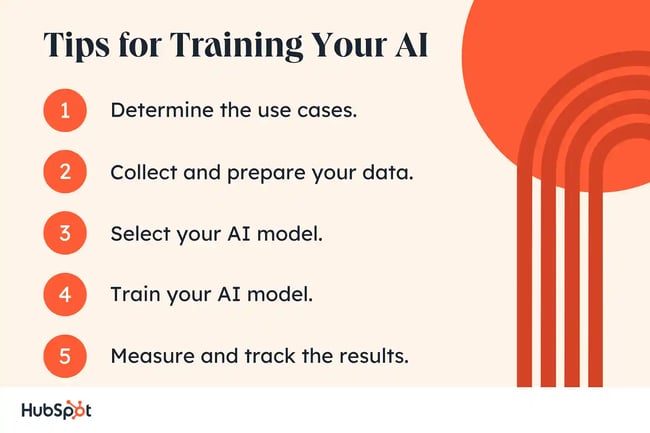
Getting Started
Artificial intelligence is expected to increase by twentyfold by 2030 — from $100 billion to $2 trillion. Every business, irrespective of its size, needs an AI algorithm to improve its operational efficiency and leverage the benefits of technology.
Artificial Intelligence

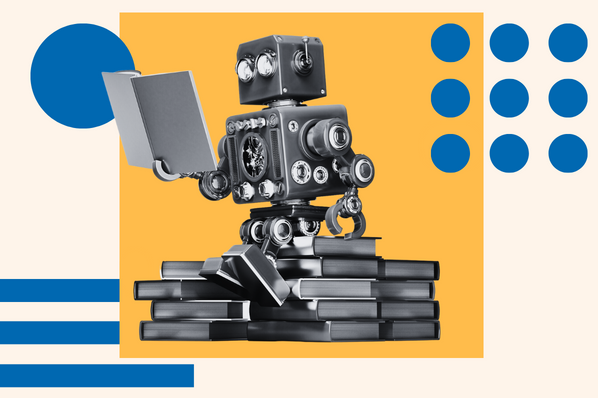
.png?height=613&width=1920)
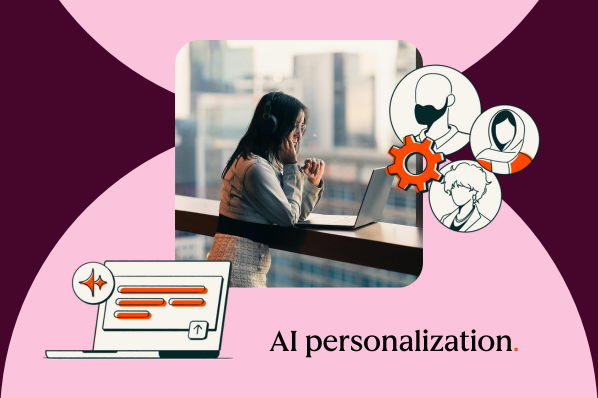
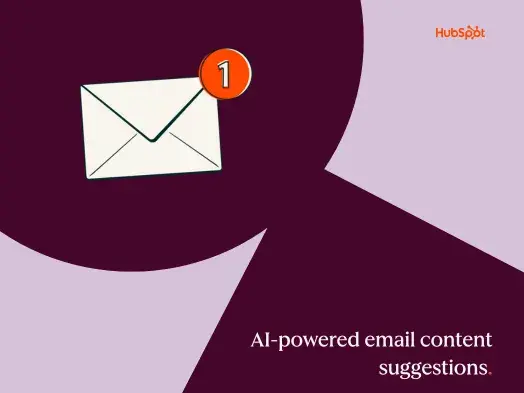


![AI email subject lines that drive 3x more revenue and actually convert [+ exclusive insights]](https://53.fs1.hubspotusercontent-na1.net/hubfs/53/ai-email-optimization-1-20251014-4500151-1.webp)

